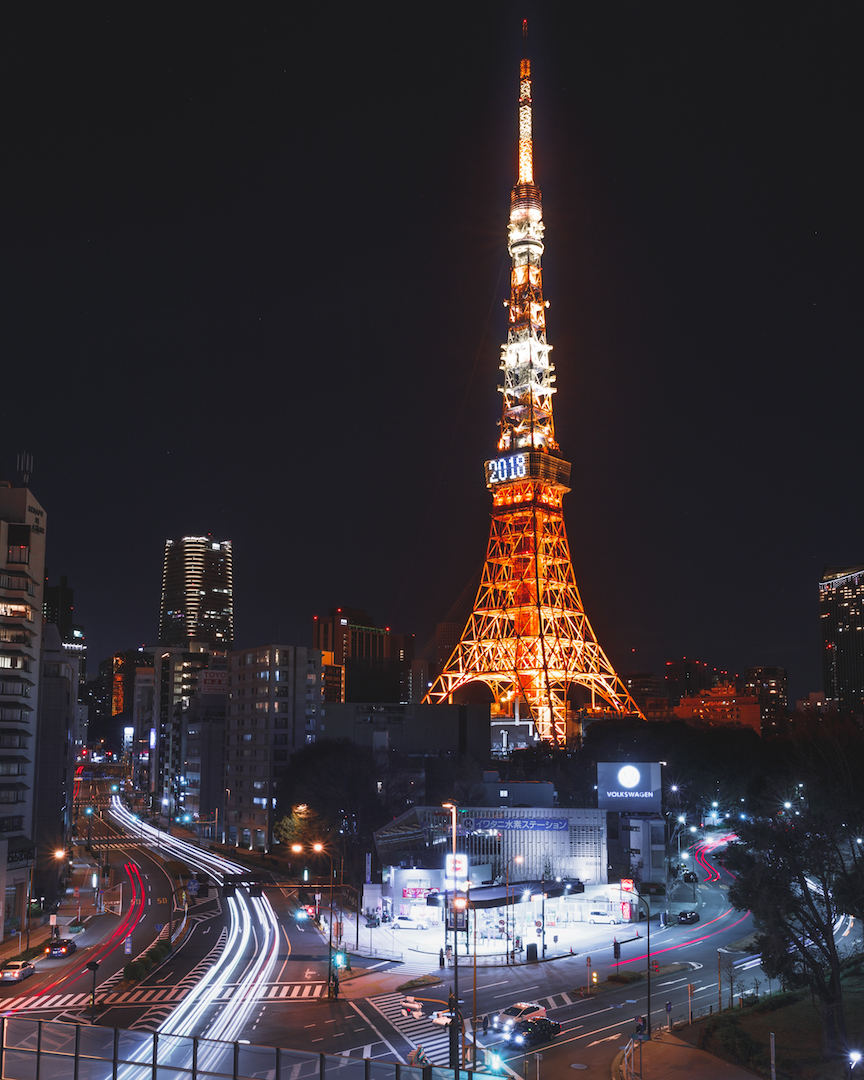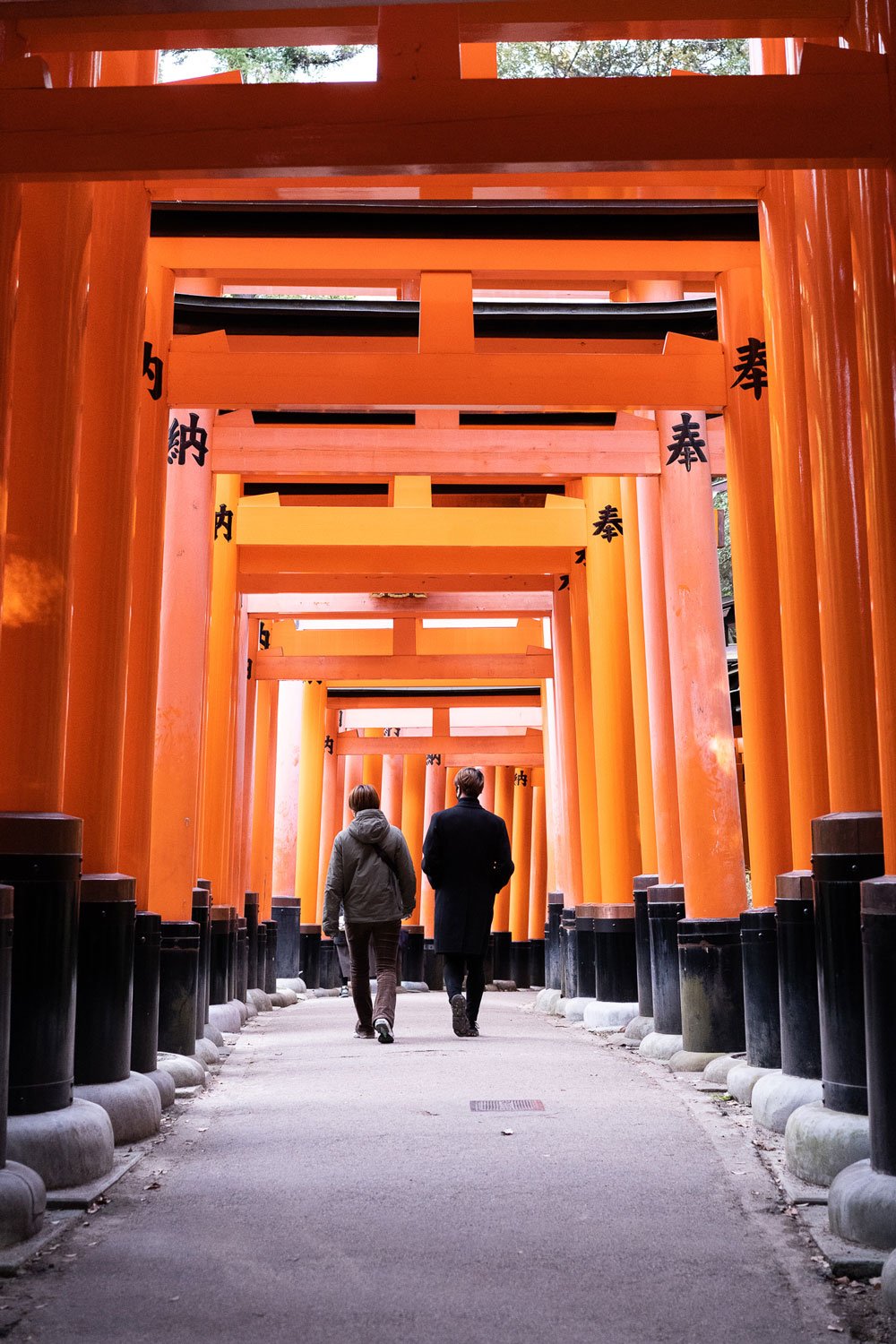TRAVEL SERIES || The Many Faces of Tokyo

Tokyo. It’s a place where the old and new converge, where you could visit a temple during the day, and enjoy the company of joyous crowds in the alleys of Golden-Gai in Shinjuku at night and shop the bustling retail shops past the midnight hour.
Shibuya at night. Credit: Yuri Suzuki.
TOKYO’S MANY FACES
Tokyo has many faces in that each district within this sprawling city has a distinguished character of its own. I had travelled by Shinkansen (bullet train) from Osaka to Tokyo many times while I was a student at Osaka University, drawn by the international city that offers a unique characteristic and scenery at every train stop. The spacious streets and soaring sleek commercial towers and modern storefronts of Ginza, the lively Takeshita shopping street linking Harajuku to Shibuya, and the vibrant nightlife in Shinjuku’s Kabukicho district. It is fascinating to me how a 5 to 7-minute train ride could seemingly transport you to a place where everything is so different from a district you were in just moments before.
I have gone back to Tokyo numerous times following my university studies in Japan, and each time I discover something new and exciting.
SHINJUKU
The last time I had travelled solo, and Tokyo is a place where you can do that with ease. I had stayed in the ‘Godzilla’ hotel in Shinjuku(Hotel Gracery Shinjuku), where tourists visit during the day to take photos of the Godzilla peering out onto the streets from the rooftop. Evenings I spent enjoying various cuisines nestled on the second, third, fourth floors of buildings lining the streets. Small Izakayas where ‘nama biru’ (beer) is the first thing you order and dinner consists of numerous skewers and a piping hot, satisfying bowl of Oden.
Shinjuku at Night. Credit: Yuri Suzuki.
Each time I visit I opt to stay in Shinjuku because the district always feels ‘alive’ at any hour of day. There are peak hours of course, such as the daily rush hour between 5-7PM. Trying to navigate rush hour at the Shinjuku station should only be reserved for locals and professionals, as you would have a difficult time making it through the hordes of people getting off work. Getting stuck at the Shinjuku train station in Japan is not a bad thing, because there is an expansive underground ‘dining street’ jam-packed with what seems like hundreds of restaurants and cafes. For those with a sweet tooth, the cake shops and bakeries at the train station are bound to draw you in with the delicate and cute cake designs, featuring playful characters like and more.
The other thing I would stress about travelling in Tokyo is that I felt safe traversing the city alone, during the day time or at night. After dinner one night I had walked about 15 minutes from my hotel to Shinjuku’s 'Golden Gai’, located in the Kabukicho district, which is made up of six narrow alleys, which are interconnected via even smaller alleyways running perpendicular to the main alleys. Don’t underestimate the amount of activity happening within these boundaries, as there are over 200 shanty-style bars, clubs and eateries clustered into the area. At 11PM at night, the alleys are crowded with locals and tourists, and you could hear laughter and conversation spilling out onto the streets from the small bars as guests enter and exit.
GINZA
I had visited Ginza to meet with a university friend who now has a young son, and we met for high-tea at an airy, brightly-lit cafe where the Japanese lined up in an orderly fashion to wait their turn for a table. A quiet recluse where we spent hours catching up and the servers attentively refilled our teas. The streets are wider here from what I recall, perfect for moms as they push their strollers through the streets of Ginza shopping the premium brands flanking both sides of the street. Flagship stores with sleek, modern designs line the streets, from Apple to Louis Vuitton to shopping centers like Tokyu Plaza, Ginza Six, and Ginza Wako where its characteristic exterior adorned with a Seiko timepiece has become an iconic landmark in the area.
HARAJUKU AND SHIBUYA
Harajuku and Shibuya are more well-known for their shopping and retail options for young adults, featuring local designer brands and the infamous SHIBUYA109 cylindrical shopping center. Though shopping centers have their appeal, whenever I visit Harajuku I always take the time to walk the Takeshita shopping street that connects Harajuku to Shibuya, as that is where you will find interesting and unique local goods and tasty street eats.
Bustling Streets of Shibuya. Credit: Yuri Suzuki.
Taking this route, tiny sweets shops nestled between retail storefronts invite you to indulge in a parfait filled with crunchy cereal, soft-serve ice cream and an abundance of delicious diced fruits. The scent of Japanese crepes is extremely enticing as you walk past, and who can resist the thin crepes with slightly crispy sides? The retail shops here carry an array of cute accessories and clothing that reflects the ‘street style’ of hip young adults in Japan, so if you love Japanese street style, you will spend hours exploring the shops lining the street and spilling out onto even smaller alleyways off the main street.
ASAKUSA
The crowds at Sensoji Temple in Asakusa.
The crowds at Sensoji Temple in Asakusa.
Nearby destinations like Asakusa, located in the “Shitamachi” district, also deserve a visit. I travelled by train for 30 minutes from Shinjuku to Asakusa to visit Sensoji Temple - Tokyo’s oldest temple built in 628 (1391 years ago!) Walking from the train station to the temple, you can see the many food stalls inviting you to try a traditional snack, like a skewer of chewy Dango, a traditional sweet made from mochiko.
Stalls offering an abundance of souvenirs and traditional Japanese eats.
Slowly make your way towards the temple as you stop by each of the food stalls to fill up like taiyaki and mochi with red bean filling (‘anko’). Most visitors will pause at the first gate, Kaminarimon Gate, to take a photo of the majestic entrance to the temple, with its giant paper lantern hanging in the entryway. There is also a second gate within, Hozomon Gate. Past this second gate you are now within the temple proper. Spend your time studying the beautiful 5-storey pagoda next to Hozomon Gate, and basking in the historical value of the space. Before you leave, you may want to purchase souvenirs like omamori amulets or omikuji, which are fortunes written on slips of paper. As you exit the temple, head on over to explore the other side and back streets surrounding the temple, where you will find an additional slew of eateries offering an abundance selection of tasty dining options.
During my recent visit to Tokyo I had fallen in love (again) with Sukiyaki, where you boil the beef yourself or the server helps you boil all the ingredients and you dip the beef into raw egg to cool it down and consume it, adding a creamy texture to the beef. It’s a rich and indulgent experience, you must try it. I was so obsessed with it I had sukiyaki three times in five days the last time I visited Tokyo. One evening, upon my brother’s recommendation, I came upon a sukiyaki restaurant where the rest of the space was packed with ‘salary man’, having beer and enjoying sukiyaki after work, and yet there I was, a tourist and lone female enjoy two pans of premium beef to herself. It was my decision to treat myself and live a little - with two pans of premium beef that was well worth the 9,000 yen bill.
These are just a few of the many places to explore in the great City of Tokyo, and with each venture you will be pleasantly surprised by how the communities seamlessly integrate traditional elements with modern updates, contributing to the ever-evolving faces of Tokyo that are still deeply rooted in tradition. Whether you are a traveler that enjoys the bustling city life or one that seeks to explore the traditional, quieter side of Tokyo, there are many options to satisfy every traveler.
The Kiyosumi Gardens in Koto City offers a quieter side of Tokyo.





